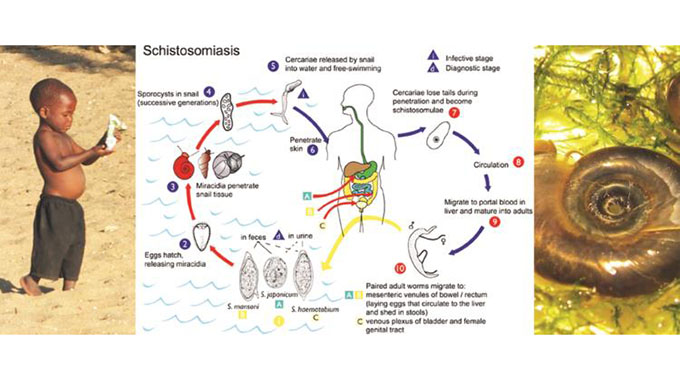Ending the scourge of NTDs

Sifelani Tsiko Senior Writer
THE recent launch of a book on neglected tropical diseases (NTDs) and a discussion by health experts on NTDs has helped the country to scale up efforts to raise awareness of this group of diseases which cause long-term suffering for millions worldwide.
Nearly one in six people worldwide are affected by NTDs — a group of bacterial, viral and parasitic diseases which disproportionately affect the poorest and most vulnerable people in the world.
Experts say NTDs disable, disfigure and stigmatise. They cause long-term illnesses, severe pain, and are the cause of death for over 170 000 people per year.
Zimbabwe is one of the countries most affected by NTDs and public experts say that the country could save up to $143 million if efforts are scaled up to eliminate five of the NTDs that affect people the country.
According to a Ministry of Health and Child Care report, the country is affected by four of the five most common NTDs — lymphatic filariasis (elephantiasis), schistosomiasis (bilharzia), soil-transmitted helminths (intestinal worms) and trachoma.
Of the country’s 63 districts, 57 are prone to bilharzia, which, if untreated, can cause infertility and other health complications.
For the five most common NTDs — lymphatic filariasis (LF), intestinal worms (ascariasis, trichuriasis, and hookworm), schistosomiasis (snail fever or bilharzia), onchocerciasis (river blindness), and trachoma — which represent 90 percent of the total NTD disease burden, disease control and even elimination is possible through a coordinated strategy of mass drug administration (MDA).
As part of efforts to combat NTDs, the Ministry of Health and Child Care, Higherlife Foundation and the END Fund recently launched a book, “Under the Big Tree: Extraordinary Stories from the Movement to End Neglected Tropical Diseases (NTDs).”
The book was written by Ellen Agler, public health leader and CEO of the END Fund.
In the book, the writer captures moving stories of people struggling cope with NTDs and simple and cost-effective strategies for combating the diseases.
The book and the END Fund programme are part of the collaborative partnership by the Higherlife Foundation, the END Fund, and the Ministry of Health and Child Care to fight for the elimination of NTDs.
Dr Portia Manangazira, director of Epidemiology and Disease Control in the Ministry of Health and Child Care, gave an overview of the NTDs in Zimbabwe and hailed the partnership with Higherlife Foundation and the End Fund in the fight to end the scourge.
Agler spoke about the book “Under the Big Tree: Extraordinary Stories from the Movement to End NTDs” highlighting how sharing experiences and health outcomes could help build the momentum required to fight NTDs in developing countries.
Warren Lancaster, senior vice president of programmes, END Fund presented the technical perspective involved in various programmes under the fund which was being implemented by Zimbabwe and other partners.
The book launch and a panel discussion with leading experts provided a range of perspectives on NTDs and a question and answer session further gave some useful insight into what people are doing to fight NTDs, the challenges they face and the collaborative opportunities that existed.
Treatment and control are relatively easy, and in most cases, a few doses of inexpensive and widely available medicines with few known side effects can prevent and treat the symptoms for approximately US$,50 per person per annum over five to seven years, public health experts say.
Eliminating NTDs can improve the productivity of workforces, creating a potential “health dividend” — put simply, the socio-economic benefit of having a healthier workforce — on national levels.
There are clear and multiple linkages between SDGs and NTDs. Development experts say combatting NTDs propels progress towards universal health coverage, improves the health of women, children, and adolescents, and ensures that no one is left behind.
NTDs are specifically highlighted in SDG 3 — “Ensuring healthy lives and promoting wellbeing for all at all ages” and further in sub-goal 3.3 — “By 2030 end the epidemics of AIDS, tuberculosis, malaria and neglected tropical diseases and combat hepatitis, water-borne diseases and other communicable diseases.”
NTD interventions are pro-poor and therefore affect poverty (SDG 1) and impact hunger (SDG 2), can improve education (SDG 4) and economic outcomes (SDG 8), and therefore reduce inequalities within and between communities and countries (SDG 10).










Comments